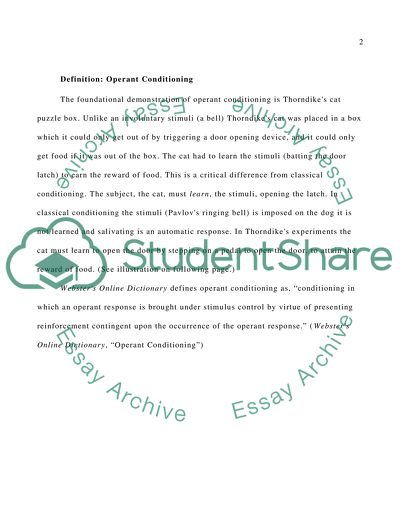Cite this document
(Operant Conditioning Essay Example | Topics and Well Written Essays - 1250 words, n.d.)
Operant Conditioning Essay Example | Topics and Well Written Essays - 1250 words. https://studentshare.org/psychology/1572329-describe-operant-conditioning-its-key-concepts-and-how-it-works
Operant Conditioning Essay Example | Topics and Well Written Essays - 1250 words. https://studentshare.org/psychology/1572329-describe-operant-conditioning-its-key-concepts-and-how-it-works
(Operant Conditioning Essay Example | Topics and Well Written Essays - 1250 Words)
Operant Conditioning Essay Example | Topics and Well Written Essays - 1250 Words. https://studentshare.org/psychology/1572329-describe-operant-conditioning-its-key-concepts-and-how-it-works.
Operant Conditioning Essay Example | Topics and Well Written Essays - 1250 Words. https://studentshare.org/psychology/1572329-describe-operant-conditioning-its-key-concepts-and-how-it-works.
“Operant Conditioning Essay Example | Topics and Well Written Essays - 1250 Words”. https://studentshare.org/psychology/1572329-describe-operant-conditioning-its-key-concepts-and-how-it-works.


